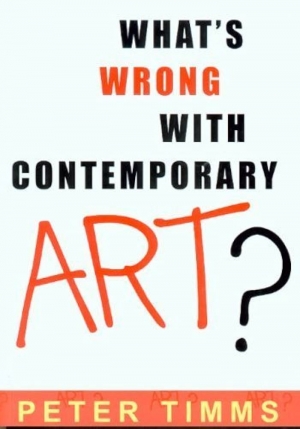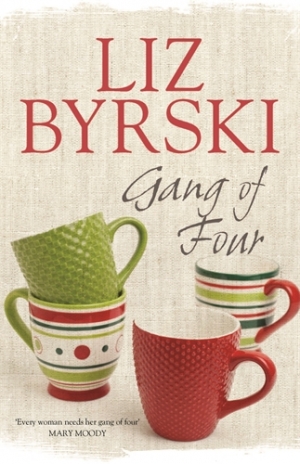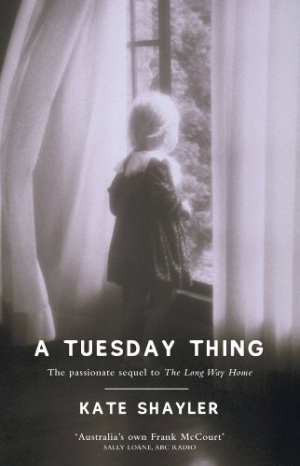Archive
Oliver Dennis reviews 'Totem: Totem poem plus 40 love poems' by Luke Davies
Luke Davies is best known as the author of Candy (1997), a novel about love and heroin addiction. His poetry, meanwhile, has attracted attention for its characteristic interest in how we relate to an unknowable universe; it is also unusual in that it draws on a more-than-everyday understanding of theoretical physics. In this latest volume, which comes in two parts – a long meditative poem followed by forty short lyrics, both celebrating love – an awareness of the vast reaches of space remains, although its expression is now less factual and has acquired a new subtlety.
... (read more)Patrick McCaughey reviews ‘What’s wrong with contemporary art?’ by Peter Timms
Peter Timms is ‘dismayed’ by the state of contemporary art and by the hype that surrounds it and the reality of the experience. He has written a book mired in exasperation and frustration. It is not hard to share Timms’s sentiments. Visit any sizeable biennale-type exhibition and you are engulfed in flickering videos in shrouded rooms, installations of more or less hermetic appeal, large-scale photographs – these often prove to be the most interesting – scratchy ‘anti-drawings’ and a handful of desultory paintings. Noise is ‘in’, too. ‘Biennale art’ is the term frequently used to describe the phenomenon.
Quite who is to blame for this occupies much of the first half of Timms’s book. Artists hell-bent on having careers rather than seeking vocations are part of the problem, and so are curators of contemporary art who nourish the artist’s every need. Art schools are next, where cultural theory has replaced the teaching of art history. The superficialities and the susceptibility to trendiness in the Australia Council are further contributors.
... (read more)Brisbane’s unruly rioters and Melbourne’s enemies within continue the Vulgar Press’s excellent series of city guides. By interpreting familiar places in Melbourne and Brisbane from within a tradition of left-wing activism, the guides emphasise a different environmental heritage. Where city planning seems bent on transforming daily life into those sanitised displays that can garner tourist dollars, these collections speak to far more challenging and imaginative traditions. Sadly, and this seems especially the case in Brisbane, the buildings around which radicals fought and dreamed have, for the most part, disappeared. Photographs in Radical Brisbane present the reader with bland offices, mundane glass and concrete façades and the occasional freeway flyover. Modern city planning has efficiently purged the landscape of any radical intrusion.
... (read more)Zeitgeist or coincidence? Spinifex and Macmillan have both just published novels with middle-aged women centre stage. In marketing terms, they have launched a niche product, targeting the middle-aged female consumer. Poppy’s Return, by New Zealand author Pat Rosier, and West Australian Liz Byrski’s Gang of Four boldly foreground women’s midlife issues. Their protagonists bravely confront the multiple challenges of their own ageing, in addition to the care of elderly relatives.
... (read more)Accounts of past child abuse and the inability or unwillingness of those in positions of authority to confront its reality are amongst the hottest of topics in today’s media. Generally, the story is about the perpetrators and their punishments, or about the impact of disclosures on church leaders forced to retire because of their negligent or political mishandling of cases brought to their attention. But what about the victims? Rules of privacy generally mean that we never learn at firsthand what it must be like to live with the knowledge of a childhood tainted by sexual abuse on the part of some adult with authority. Still less are we likely to know what that knowledge must be like when the abuser was also a much-loved family relation, such as, or especially, a father. For that reason, memoirs such as these are valuable in that they initiate the reader into the long-lasting effects of abuse with graphic emotional immediacy.
... (read more)Australians like to believe they live in the best country in the world. Plenty of space, abundant natural resources and lots of sunshine for this nation whose inhabitants have come from all corners of the earth to a land of opportunity. It’s an appealing national smugness that has comforted generations of Australians as they looked with tolerant amusement at the congested societies of industrialised countries elsewhere in the world. Aren’t we lucky!
Occasionally, there may have been some nagging doubts as we looked at the growing wealth of the Asian economies and the technological sophistication of overseas manufacturing. Are we as smart as they are? Do we work hard enough? Are we falling behind? Is this the land of the long weekend? In recent years, have we become hard-hearted and lazy? Good questions, and easier to answer anecdotally and instinctively rather than empirically. Generally, we thanked our lucky stars.
... (read more)Here are two engaging books that trade on the romance and exoticism of northern Australia. Neither makes much demand on the reader nor offers profound insights, but both in their different ways abound in atmosphere and a genuine ‘feel for place’.
Rosemary Hemphill’s childhood was one of extreme contrasts. Her father, the product of Jewish Orthodox parents and Sydney Grammar, washed up in Broome with the dream of becoming the master of a pearling fleet. As so many do, he fell in love with the place and stayed until forced out by the fall of the pearling industry. He served in World War I and, while recuperating from wounds in England, fell in love with the beautiful and cultured daughter of a conventional upper-middle-class couple. The English in-laws insisted that he convert in order to marry their daughter. Back in Sydney, his father declared ‘my son is dead’, as is the custom of Orthodox Jews whose progeny ‘marry out’, and forced the rest of the family to cut ties as well. Louis Goldstein, now Louis Goldie, returned to Broome with his wife and pursued the half-glamorous, half-arduous life of the ‘master pearler’. The life was harder on the women, who were forced to battle the extreme physical conditions, isolation and monotony.
... (read more)War stories are never extrinsic to war. The us-and-them plots, domino theories and governing metaphors, the operational jargon and vast naming schemes, even the post-hoc synopses (we won, we should have won, another win like that and we’re finished): these are not patterns laid over something real; they stream from the enabling code.
Between 1966 and 1971 the Australian Task Force Vietnam administered its own war in Phuoc Tuy, a province south-east of Saigon. The Australians had their own allocation of enemy (D445 local guerrilla battalion and elements of the NVA 5th Division), their own style (US gear and fire-support, Vietnamese patrol tactics) and, of course, their own story. They were the latest Anzacs. Right?
... (read more)About to present a lecture to medical students, pathologist Dr Anya Crichton notes optimistically, in Kathryn Fox’s new novel, that the word ‘forensic’ in the title will pretty much guarantee her a full house. Sadly, when the overstressed and overambitious students discover that the topic is not going to figure on their exam paper, a significant number depart, therefore missing out on such compelling topics as how to spot the suspicious death of a diabetic, or when to accuse the family pet of snacking on the deceased.
... (read more)The Lu Rees Archives of Australian Children’s literature is a collection of children’s books and manuscripts whose stated purpose is to ‘provide resources for the study and research of Australian authors and illustrators, including both the literature and the historical and cultural context in which it was created’. Officially owned by the Children’s Book Council of Australia, and housed in the University of Canberra’s library, the collection of about fourteen thousand items provides a ‘particularly rich and comprehensive overview of Australian children’s literature, its creation and publishing endeavour’. Lu Rees, a foundation member of CBCA, started the collection with her own substantial holdings, and the collection encourages donations. Walter McVitty has made a gift of more than 3000 books and the entire archive of his publishing company, Walter McVitty Books, which existed from 1985 to 1997. In order to aid future researchers who might find the vast array of material in that archive bewildering, McVitty wrote explanatory notes of about twenty thousand words. He has expanded these into this book, which Lothian (the company that bought his imprint) has published.
... (read more)









